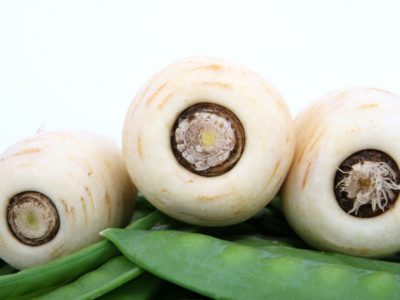The parsnip, Pastinaca sativa, is a cream-colored root vegetable that is closely related to carrot and parsley (in the plant family apiaceae). It is native to Eurasia, which it has been used as a vegetable since antiquity and first cultivated by the Romans. Parsnips are an unusual vegetable in that they become sweeter after the first frost; in fact, these root vegetables resemble carrots in almost every way except for color and flavor (they’re sweeter in general). Most commonly, parsnips are cooked before eating, but they can also be consumed raw. I like including parsnips as a great alternative starchy carb, especially when I’ve grown tired of the standard AIP-friendly sweet potatoes, yuca, or plantain! Some of my favorite recipes that use parsnips include my AIP-friendly Paleo French Fries, Carrot-Parsnip Muffins, and Meyer’s Lemon Custard Souffle.
In addition to being delicious, parsnips are a great source of nutrition! They have good amounts of vitamins C, E, K1, B5, and B9; as well as the minerals manganese and phosphorus. Otherwise, 100g of parsnip provides small to trace amounts of all of the other dietary vitamins and minerals.
When looking for parsnips, your best bet for flavor and nutrition is to get them in season (late fall into winter). You should be able to pick them up at your farmers’ market or grocery store!


 Red Cabbage
Red Cabbage